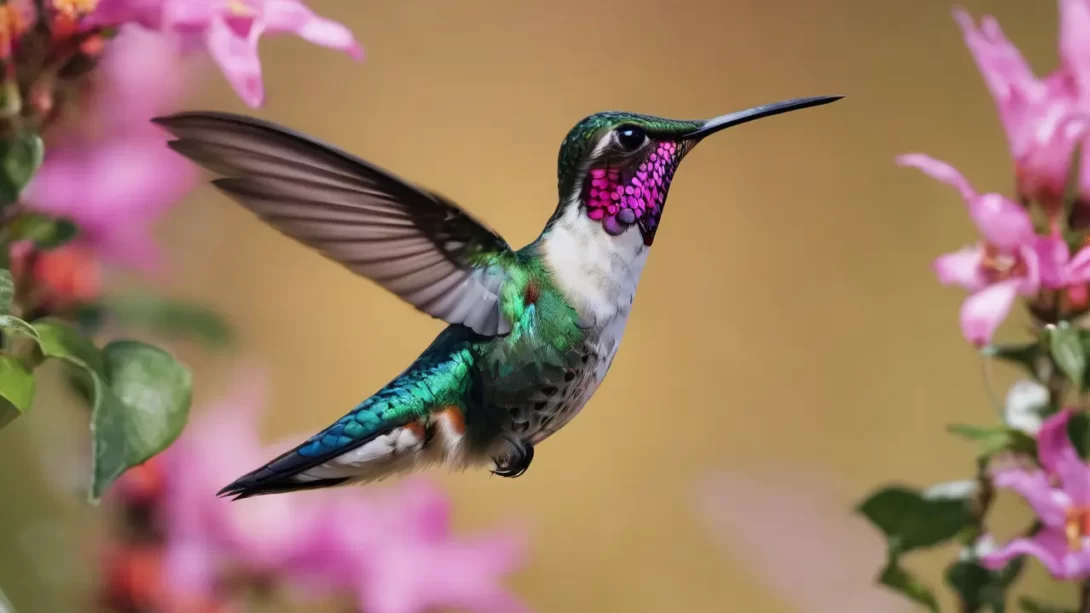Hummingbirds, with their iridescent feathers and rapid wing beats, are a captivating sight in gardens and wild areas alike. These tiny birds play a crucial role in ecosystems as pollinators. Among bird enthusiasts, hummingbird feeders have become a popular way to attract these creatures and observe them up close. A common question that arises is whether hummingbirds have a preference for warm or cold nectar. This article aims to delve into this topic, exploring the feeding preferences of hummingbirds and how this knowledge can inform the best practices for feeding them.
Hummingbirds
Hummingbirds are known for their small size, remarkable flying abilities, and reliance on nectar as a primary food source. They possess a high metabolism to support their energetic lifestyle, which includes hovering and flying backward. The high sugar content in nectar provides the necessary energy for their high metabolic demands. The frequency and volume of their feeding are influenced by this need for constant energy replenishment.
Hummingbird Feeding Preferences
The question of whether hummingbirds prefer warm or cold nectar is a topic of interest for many bird lovers. In the wild, the temperature of nectar varies depending on environmental conditions but is generally close to the ambient temperature. Some believe that since hummingbirds are often found in warm climates, they may have a preference for warmer nectar, akin to the conditions they experience naturally.
However, research and expert opinions on this matter provide varied conclusions. Some studies suggest that hummingbirds are indifferent to nectar temperature, while others propose that they might have a slight preference for warmer nectar, especially in cooler weather. The warmth of the nectar could potentially aid in maintaining their body temperature, thus reducing their energy expenditure for thermoregulation.
The Impact of Nectar Temperature
The temperature of nectar can significantly affect its properties, such as viscosity and sugar concentration. Warm nectar tends to be less viscous, making it easier for hummingbirds to sip. In colder conditions, nectar can become more viscous, which might require more effort for the birds to feed. However, this change in viscosity does not alter the nutritional value of the nectar itself. The sugar concentration remains the same, providing the essential energy that hummingbirds need.
Furthermore, there’s a consideration of how nectar temperature impacts the feeding efficiency of hummingbirds. Easier access to nectar due to lower viscosity in warmer conditions could potentially make feeding less energy-intensive for these birds. This aspect is particularly significant given the high energy expenditure of hummingbirds due to their rapid wing flaps and constant movement.
Best Practices for Feeding Hummingbirds
When maintaining hummingbird feeders, the temperature of the nectar should be a consideration, but it’s not the only one. Ensuring that the nectar is fresh and the feeder is clean is paramount. Nectar should be replaced every few days, more frequently in hot weather, to prevent fermentation and bacterial growth.
In terms of temperature regulation, placing feeders in shaded areas can prevent the nectar from becoming too hot, which might deter hummingbirds and accelerate nectar spoilage. Conversely, during cooler weather, positioning the feeder in a sunny spot can keep the nectar at a more appealing, warmer temperature.
Additionally, the design of the feeder can play a role in maintaining an appropriate nectar temperature. Some feeders are designed to minimize the heating effect of direct sunlight, keeping the nectar at a moderate temperature throughout the day.
Additional Considerations for Hummingbird Care
Beyond feeder maintenance and nectar temperature, there are other important factors to consider in caring for hummingbirds. Creating a safe and welcoming environment is crucial. This involves more than just providing nectar; it includes offering natural food sources such as flowering plants that are attractive to hummingbirds. These natural sources not only provide nectar but also encourage the presence of small insects, which are an important protein source for hummingbirds.
Preserving and enhancing their natural habitat is equally important. This can be achieved by planting a variety of nectar-rich flowers, avoiding the use of pesticides, and providing spaces for nesting. Such practices help sustain a healthy hummingbird population and contribute to the broader ecosystem’s well-being.
It’s also vital to address common myths about feeding hummingbirds. For instance, the misconception that red dye in nectar is beneficial can be harmful. The dye is unnecessary, as the color of the feeder itself is sufficient to attract birds. Natural, homemade nectar made from sugar and water (in a 4:1 ratio) is the best and safest option.
Conclusion
To conclude, while there is some evidence suggesting that hummingbirds might have a preference for warm nectar, especially in cooler climates, the most critical factors in feeding these birds are the freshness and cleanliness of the nectar and feeders. Maintaining an optimal feeding environment for hummingbirds involves a balance of providing well-maintained feeders, ensuring a supply of natural food sources, and preserving their habitat.
Hummingbirds are not only a delight to observe but also play a significant role in pollination. By understanding their needs and behaviors, gardeners and bird enthusiasts can contribute to the conservation and thriving of these remarkable birds. Responsible and informed feeding practices, coupled with habitat preservation efforts, can ensure that hummingbirds continue to grace our gardens and natural spaces for years to come.



